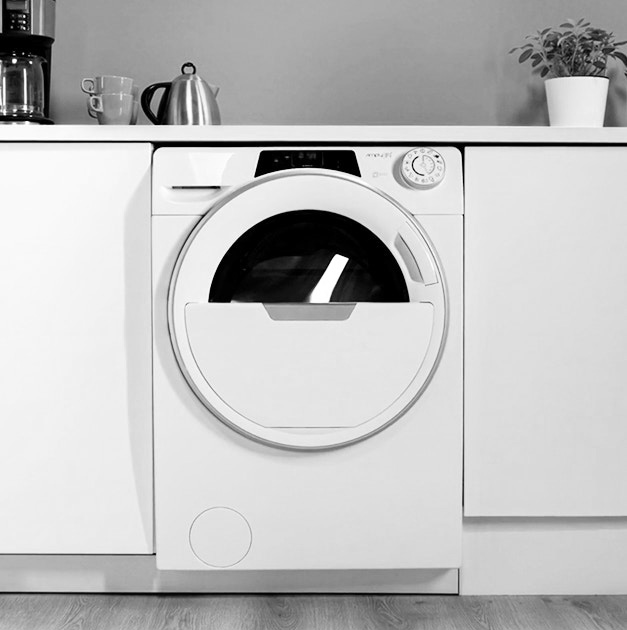Established in 1984, Haier Group currently bills itself as a “world-leading provider of solutions to better life.” But they didn’t start out that way. If you look at the 6 strategic stages of the company lifecycle, from 1984 to the present, you’ll see that in the early days of brand billing, they made products. Fast forward to today where they are in the ecosystem strategy stage, focused on setting up IoT ecosystems around the user experience. So what happened? Well, the short answer is “usership.”
Usership happens when consumers gain access to services on a subscription basis, facilitated by digital capabilities.
In one industry after another, usership has erased (or at least vastly reduced) the need to own physical products. CDs were replaced by streaming services. Goodbye, DVDs; hello, Netflix. And more screen scrolling and less page flipping for your daily news fix. This trend towards usership obviously extends beyond media, into all areas of our lives and work, from transportation to education, healthcare to digital storage, and beyond. In fact, according to a recent Harris survey on the End of Ownership, 78% of international adults currently have subscription services and 75% believe that, in the future, people will subscribe to more services and own less physical “stuff.”
Appliances are in many ways a final frontier for the ownership-usership transition.
For most consumers, the idea of subscribing to a washing machine or a refrigerator is still new. Which presents Haier with a huge challenge — and a huge opportunity. “The perspective of the consumer is changing quickly,” explains Andrea Contri, IoT Ecosystem Director at Haier Europe. “They no longer expect to own their smartphone at the end of the subscription. We see this mentality coming to appliances very soon, even though we are not quite there yet.” By jumping on this trend early, Haier is looking to gain first-mover advantage in the space, pursuing the opportunity with an entrepreneurial mentality. Their first entry into the usership market with a product that has been “servitized” is called WashPass. WashPass is a high-performance, all-in-one washing system by Candy, a Haier brand. The consumer pays a set-up fee, then a monthly subscription charge, plus a per-use component. The subscription includes a smart washing machine, a customized detergent blend, and a service package. Haier research has shown that the system results in up to 70% better washing performance — which means that high tech has officially arrived in the laundry room! “Our journey toward WashPass actually began with technological innovation around the detergent,” says Contri. “We were trying to come up with customized detergent mixes for specific laundry types. Then we realized we had a provisioning challenge, in that most of these ingredients were not available at the supermarket.”
“The perspective of the consumer is changing quickly: They no longer expect to own their smartphone at the end of the subscription. ”
— Andrea Contri, IoT Ecosystem Director at Haier Europe
Haier quickly realized that an automated subscription business model could solve multiple challenges at once: The customer gets a higher quality wash delivered to their door, without the burden of ownership, and the company builds a much stronger relationship with their customers. That’s because with WashPass, Haier places smart washers in customers’ homes. “Now that we have these nerve endings in consumer homes — which we treat with the utmost respect, especially in terms of privacy and security — we have an invaluable opportunity to provide better service to the consumer,” says Contri.
Effectively, Haier becomes integrated into the customer journey through the interaction with the devices.
This delivers more value to the consumer, and allows the company to monetize the recurring relationship. Open lines of communication with their customers, and some education, have been part of the rollout. Haier has received both positive and negative feedback — and this feedback is immediate and direct, without retail intermediaries. With these insights, Haier can quickly identify potential stumbling blocks, as well as what is working and popular. Subscription programs like Washpass need time and trial-and-error to get right, and Haier understood that from the beginning. Washpass began with only 500 passes available within the United Kingdom, a strategy that allowed the company to build exclusivity into the offering while also mitigating risk. “There is some risk involved in forging a closer relationship with consumers,” says Contri. “You need to be able to explain the value proposition.”
“There is some risk involved in forging a closer relationship with consumers. You need to be able to explain the value proposition.”
— Andrea Contri, IoT Ecosystem Director at Haier Europe
Haier also needed to find the right channel for their direct-to-consumer (D2C) programs. “It would be an order of magnitude more complex to bring WashPass to fruition inside a physical retail store,” says Contri. “Online sales makes it much simpler and immediate to explain the proposition to the consumer.” Online interaction gives the consumer a clear starting point for their subscription journey without the distractions that come with the retail environment. In the future, with more data, Haier may consider rolling out the D2C program in-store in a specialized area, similar to the set-up at mobile device stores. But for now, the company is pursuing agile experimentation, and the D2C journey is not yet part of their core business. But that doesn’t mean they’re slowing down their investments in smart appliance technology. They continue to be number one for smart appliance market share in Europe. “We have invested a lot in the infrastructure for connected washing machines (and ovens and air purifiers and vacuum cleaners and so on). This strategy may not necessarily pay for itself from the get go — it’s an investment that we’re making,” says Contri.
Haier’s experience with WashPass shows that the shift to subscriptions can be a clean transition (as clean as a load of fresh laundry!).
While digital transformation is a big step, their story offers a use case for how to mitigate risk while launching a successful subscription business model:
- Start small. Subscriptions can be part of a portfolio of initiatives that a company runs.
- Tap the experts. Take advantage of know-how (talent) and best practices that have been in other subscription service industries.
- Mine your own capabilities. Capitalize on investments you’ve already made in technology and product development.
By moving early into appliance subscriptions, Haier is forging strong customer relationships that will be difficult for competitors to dislodge down the road. So while other product appliance companies might be just sitting back in “soak” mode, Haier is loaded and locked, and already spinning — and likely to become the reference point for other companies that follow.




